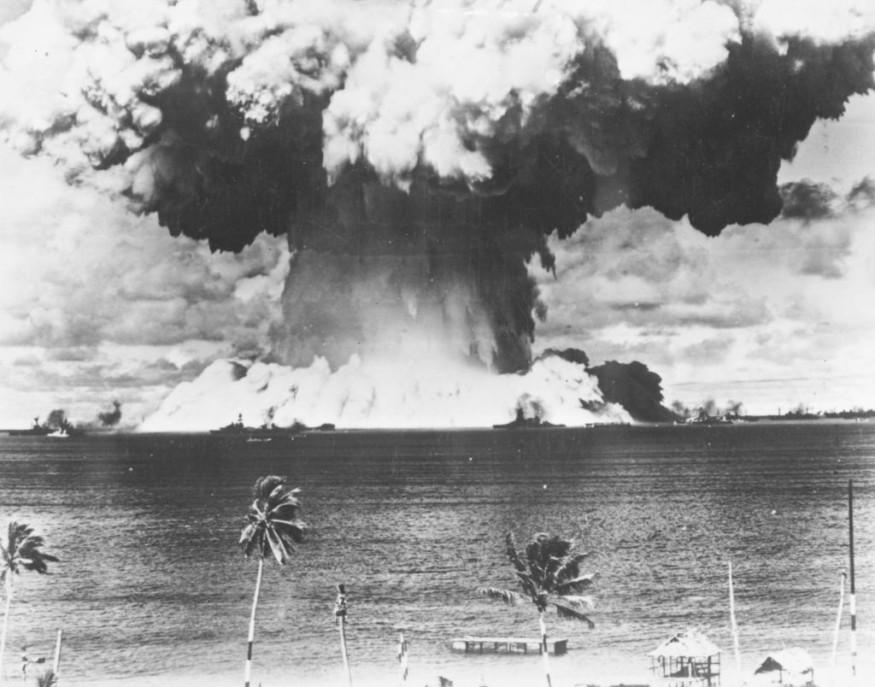A US Diplomatic Cable mentioned that the United States has sped up the delivery of the enhanced nuclear weapons to Europe amid rising tensions with Russia.
The improved B61-12 thermonuclear bomb, which was planned to arrive in Europe next year, might be used as early as December 2022, reports said. U.S. officials reportedly informed NATO partners during a closed-door conference in Brussels this month.
With this newer and more precise variant, the previous B61-12 bombs will be replaced in several NATO nations, including Belgium, the Netherlands, Italy, Germany, and Turkey.
Additionally, as reported by EurAsian Times, the Biden administration has added the U.K. to the list of nations that would keep U.S. nuclear weapons.

Pentagon to Accelerate Stocking B61-12 Thermonuclear Bombs
According to a diplomatic cable and at least two unnamed sources (per Republic World), the Pentagon is speeding up its preparations to stockpile the modified B61-12 gravity bombs in Europe as part of the NNSA's B61-12 Life Extension Plan, which is expected to be finished by 2025.
The modernized nuclear weapons will now arrive in December, according to US officials who informed the North Atlantic Alliance at a private conference earlier this month in Brussels. Originally planned for storage and potential deployment in 2024 along with delivery vehicle modernization projects.
Due to the impending security concerns posed by Russia's continued advance along Europe's eastern flank, the decision to step up the upgrade was recently taken. The B61-12 model would include a tail kit to increase accuracy and provide variable yield capabilities, with a yield ranging from 0.3 KT to 170 KT for both strategic and tactical usage. This variant was updated by the United States for Europe.
At several storage locations around Europe, the older warheads will be swapped out with the more modern versions in preparation for a possible deployment by American and NATO allies' bombers and fighter fighters. The F-35A, the F-18 Super Hornet, or the Eurofighter Typhoon are just a few examples of dual-capable NATO jets that can carry them.
How The Low-Yield Bomb Works
The B61 series of thermonuclear gravity bombs, in the U.S. military's arsenal since 1968, has undergone modernization to create the B61-12m Newsweek said. The gravity bomb upgrade project has been in development for a while, and it has been noted as the most costly nuclear weapon project to date.
The 50 kiloton B61-12 bomb, which is 12 feet long and weighs the same as 50,000 tons of TNT, is incredibly accurate and has a controlled tail rudder that makes it possible to detach its parachute. Pilots can drop the bomb without precisely flying over the target thanks to this equipment.
A $10 billion, nine-year Department of Energy effort called the B61-12 Life Extension Program would replace around 100 B61 models from earlier generations at six European air bases in Belgium, Italy, Germany, the Netherlands, and Turkey.
According to National Interest, the air force may use the low-yield, more precise B61-12 for "low-yield nuclear attack, earth-penetrating strikes, above surface detonation, and bunker-buster explosions" by air-dropping it using "gravity or guided drop modes."
The improved capabilities of the bomb enable military leaders to employ it as a deterrent against "a more limited or tactical nuclear strike," a scenario analysts have theorized as a result of the war between Russia and Ukraine.
According to the objective, the explosive strength of the bomb "can be dialed up or down, making it either a low- or medium-yield weapon."
It was not possible to transport the previous type in a variety of U.S. and allied bomber and fighter aircraft, including the B-2 and B-21 bombers and the F-15, F-16, F-35, and Tornado fighters.
Relatedly, the U.S. Air Force recently conducted flight tests of a B-2A bomber radar-aided targeting system, allowing guided nuclear warheads like the B61-12 to be navigated in non-GPS environments.
RELATED ARTICLE : Possible Impact of Explosion of All Nuclear Weapons; Here's the Scientific Explanation!
Check out more news and information on Energy and Physics in Science Times.










